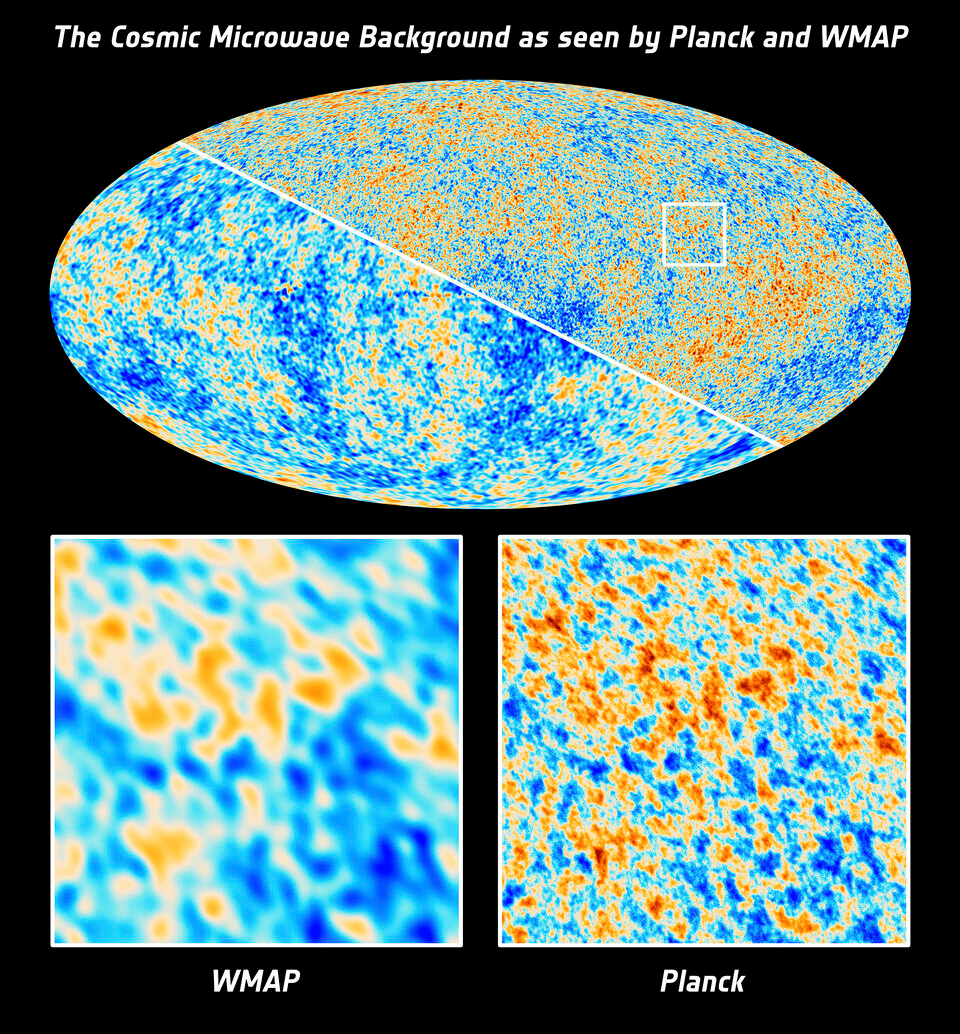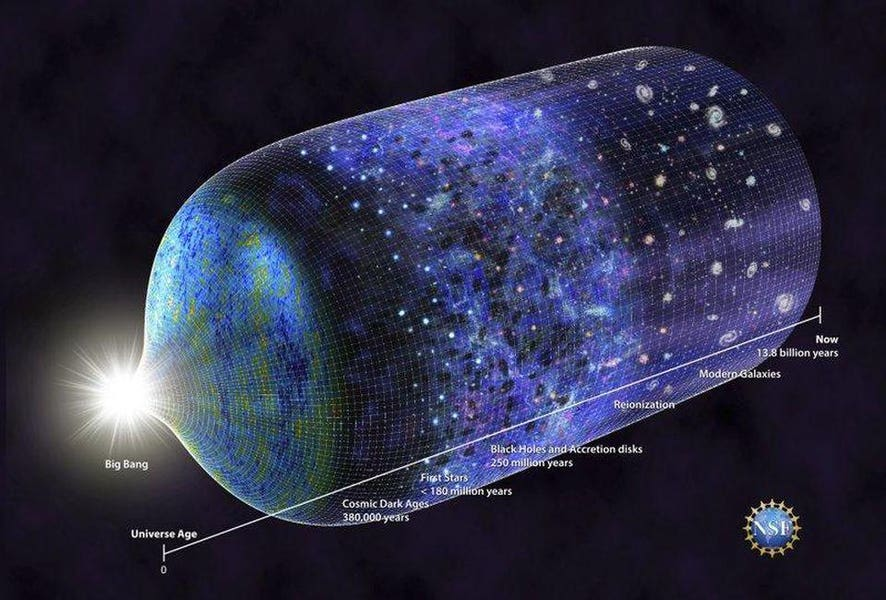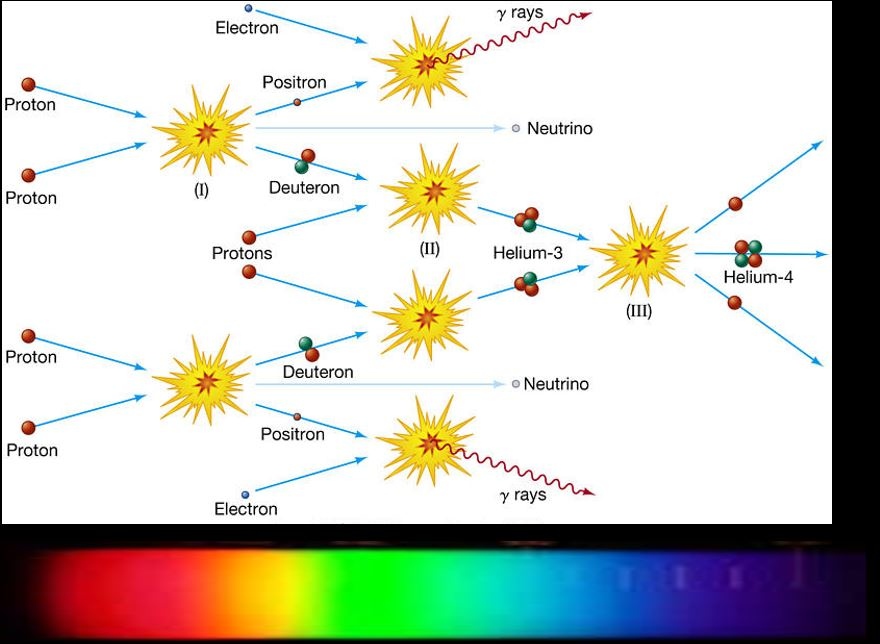How our universe came to exist.
Mysteries of Universe!
The question of how our universe came to exist has captivated humanity for millennia, driving us to peer deeper into space and further back in time to understand our cosmic origins. Today, through groundbreaking observations from satellites like the Planck probe and the James Webb Space Telescope, we have assembled a remarkable scientific narrative of universe creation that reads like the most extraordinary story ever told.ejsee+2

Comparison of the cosmic microwave background radiation maps from ESA’s Planck and WMAP satellites, illustrating differences in resolution and detail esa
The Big Bang: More Than Just an Explosion
Contrary to popular perception, the Big Bang was not an explosion in space, but rather the appearance of space itself everywhere in the universe. Approximately 13.8 billion years ago, our universe began from an infinitely dense and hot point known as a singularity—a state where the very concepts of space and time break down.ejsee+1
The earliest moments remain shrouded in mystery. During the first 10^-43 seconds, called the Planck epoch, temperatures reached an incomprehensible 10^32 degrees Kelvin, and the four fundamental forces of nature—electromagnetic, strong nuclear, weak nuclear, and gravitational—existed as one unified force. Under these extreme conditions, even the concept of particles loses meaning.ejsee

Timeline of the universe from the Big Bang to modern galaxies over 13.8 billion years forbes
Cosmic Inflation: The Universe’s Greatest Growth Spurt
Around 10^-37 seconds after the Big Bang, the universe underwent cosmic inflation—a period of exponential expansion that occurred faster than the speed of light. During this brief moment lasting less than 10^-35 seconds, the universe expanded by at least 35 orders of magnitude, stretching from atomic scales to astronomical ones.ssrn+1
This extraordinary expansion solved several fundamental problems in cosmology. It explains why the universe appears remarkably uniform in all directions, despite regions being too far apart to have ever communicated with each other. Inflation also flattened the universe’s geometry and diluted any exotic relics like magnetic monopoles that should have been produced in the early universe.cdnsciencepub+1
Most remarkably, quantum fluctuations during inflation—microscopic variations in energy density—were stretched to cosmic scales, becoming the seeds that would eventually grow into galaxies, stars, and all the large-scale structures we observe today.journal.uinjkt+1
The Cosmic Microwave Background: Echoes from the Dawn
About 380,000 years after the Big Bang, the universe had cooled enough for electrons to combine with atomic nuclei, forming the first neutral atoms in an event called recombination. This marked a pivotal moment when the universe became transparent to light for the first time, allowing photons to travel freely through space.opastpublishers+1
These ancient photons still permeate the universe today as the Cosmic Microwave Background (CMB)—a faint afterglow of the Big Bang with a temperature of just 2.725 Kelvin. Discovered accidentally in 1965 by Arno Penzias and Robert Wilson, the CMB provides our earliest direct observation of the universe and serves as compelling evidence for the Big Bang theory.anantaajournal+2

Diagram of stellar nucleosynthesis showing nuclear fusion steps forming helium from protons, accompanied by a visible spectrum of light khadley
Precise measurements from the WMAP and Planck satellites have revealed tiny temperature fluctuations in the CMB—variations of just one part in 100,000. These subtle anisotropies encode a wealth of cosmological information, allowing scientists to determine the universe’s age, composition, and geometry with unprecedented precision.opastpublishers+2
Stellar Nucleosynthesis: Forging the Elements
While the Big Bang produced primarily hydrogen and helium, the heavier elements essential for planets and life were forged in the nuclear furnaces of stars through stellar nucleosynthesis. As stars burn hydrogen into helium in their cores, temperatures and pressures reach extreme levels—around 15 million degrees Celsius in our Sun’s core.scirp+1
Massive stars can fuse progressively heavier elements through carbon burning, neon burning, oxygen burning, and silicon burning, creating elements up to iron. However, iron represents a boundary—fusing elements heavier than iron consumes more energy than it produces, leading to the star’s collapse.arxiv+1
Elements heavier than iron are created during the explosive deaths of massive stars in supernovae, where extreme conditions allow rapid neutron capture processes to build the heaviest elements in the periodic table. These stellar explosions scatter newly formed elements into space, enriching the interstellar medium and providing the raw materials for future generations of stars and planets.article.sciencepublishinggroup+1
The Cosmic Web: Architecture of the Universe
The universe’s large-scale structure resembles a vast cosmic web—a network of dark matter filaments connecting massive nodes where galaxies congregate, separated by enormous voids containing few galaxies. This intricate architecture arose from the gravitational collapse of dark matter, which began clumping together soon after recombination.arxiv+2

Visualization of the cosmic web showing dark matter filaments and galaxy clusters that form the universe’s large-scale structure astronomy
Dark matter, comprising about 27% of the universe, provides the gravitational scaffolding for cosmic structure formation. Unlike ordinary matter, dark matter interacts only gravitationally, allowing it to collapse and form halos well before ordinary matter could cool and condense. Galaxies formed within these dark matter halos through complex processes of gas cooling, star formation, and merging.arxiv+4
The Accelerating Universe and Dark Energy
Perhaps the most surprising discovery in modern cosmology came in 1998, when observations of distant supernovae revealed that the universe’s expansion is accelerating. This acceleration is attributed to dark energy—a mysterious component with negative pressure that comprises approximately 68% of the universe’s total energy density.preprints+1
The nature of dark energy remains one of the greatest mysteries in physics. It appears to be an intrinsic property of space itself, maintaining constant energy density even as the universe expands. This leads to the strange situation where dark energy becomes increasingly dominant over time, driving the universe toward an ever-accelerating expansion.arxiv+1
Recent Discoveries Reshaping Our Understanding
The James Webb Space Telescope has revolutionized our view of the early universe, discovering galaxies that formed much earlier and grew more massive than previously thought possible. Some observations challenge our models by revealing bright sources of light from epochs when the first stars should not yet have formed.wikipedia+2
These discoveries have led to new hypotheses, including the possibility that primordial black holes—formed in the first seconds after the Big Bang—may have been the first significant sources of light in the universe, preceding even the first stars. Such findings remind us that cosmic dawn holds many secrets yet to be unveiled.consensus
The Standard Model of Cosmology
Today’s Lambda-CDM model—incorporating a cosmological constant (dark energy), cold dark matter, and ordinary matter—successfully explains a vast array of observations. This standard model describes a universe that is 13.8 billion years old, composed of 5% ordinary matter, 27% dark matter, and 68% dark energy.ssrn+2
Yet mysteries remain. The nature of dark matter and dark energy, the mechanism behind cosmic inflation, and the origin of the matter-antimatter asymmetry all await deeper understanding. Each answer seems to reveal new questions, ensuring that the story of universe creation continues to evolve.ejsee+1
Conclusion: A Universe of Wonder
The scientific account of universe creation represents one of humanity’s greatest intellectual achievements—a story that spans from quantum fluctuations to cosmic evolution across 13.8 billion years. Through careful observation and theoretical insight, we have traced our cosmic origins from a primordial singularity to the rich, complex universe we inhabit today.
From the first moments of inflation that set the stage for everything that followed, to the formation of the first stars that lit up the cosmic darkness, to the ongoing acceleration driven by mysterious dark energy—the universe’s biography reads like an epic tale of transformation and emergence. As our observational capabilities continue to advance with missions like the James Webb Space Telescope, we can expect this remarkable story to grow even richer, revealing new chapters in the greatest story ever told: the birth and evolution of everything we know.
The universe creation narrative demonstrates the power of scientific inquiry to illuminate even the most profound questions about existence itself. In understanding our cosmic origins, we gain not only knowledge of the past but also insight into our place in the vast cosmic web of space and time.